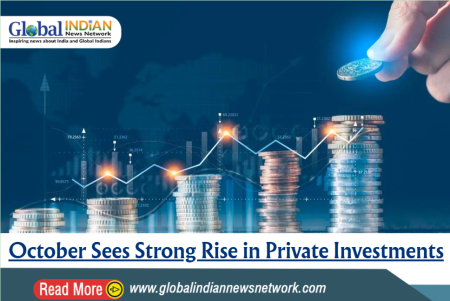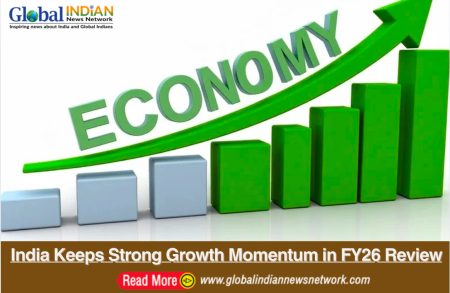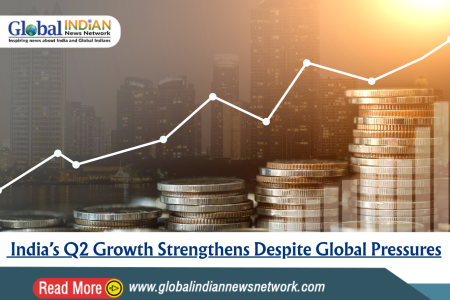
Each year, on the eve of the budget presentation, the central government typically releases an Economic Survey. However, due to the impending elections, the traditional economic survey was deferred from its usual date of January 31. Instead, the government issued a comprehensive report titled ‘Indian Economy–A Review,’ outlining India’s progress over the past decade. Prepared by the office of the Chief Economic Advisor (CEA) V Anantha Nageswaran, this report also offers insights into the economic outlook for the forthcoming years.
In this summary, we highlight the key insights from the report.
Overview of the Indian Economy (1950-2014)
Initially, from 1950 to 1980, India functioned as a closed economy with import substitution policies, export subsidies, and stringent controls on technology and investment. Post-1980, recognizing the limitations of this approach, pro-business reforms were introduced, such as import liberalization, export incentives, and an expansionary fiscal policy. While these changes aimed to enhance productivity and stimulate demand, they also resulted in unsustainable investments, questionable loans, and a Balance-of-Payments (BoP) crisis in 1990-91.
The 1991 Balance-of-Payments (BoP) crisis served as a pivotal moment in India’s economic journey. Reforms were initiated to dismantle a complex system of regulations, licenses, and state-owned enterprises, transitioning away from inward-looking trade policies. India moved towards a market economy by abolishing industrial licensing and liberalizing foreign direct investment (FDI). However, the latter half of the 1990s witnessed a growth slowdown due to various factors, including the East Asian financial crisis, fiscal challenges, agricultural issues, delays in structural reforms, and political instability. Some attribute the slowdown to inflation-induced monetary tightening.
The early 2000s witnessed robust domestic economic activity, improved corporate performance, a conducive investment climate, and positive investor sentiments towards India. Transformative reforms from 1998-2002 contributed to this growth, along with global economic expansion and increased capital inflows to India. Initiatives like Sarva Shiksha Abhiyan (SSA), National Rural Health Mission (NRHM), and National Rural Employment Guarantee Scheme (NREGS) were implemented. However, the global financial crisis in 2008 exposed vulnerabilities, leading to a surge in bad debts in banks, peaking at double-digit percentages by March 2018, primarily originating from 2006 to 2008.
During 2009-2014, the government aimed to sustain growth through persistent high fiscal deficits and loose monetary policies. Nominal GDP growth remained elevated due to high inflation, with India experiencing annual double-digit inflation rates for five consecutive years. The country faced significant twin deficits – a fiscal deficit of 4.9% in FY13 and a current account deficit of 4.8% in FY13 – resulting in an overvalued rupee. In 2013, these challenges led to a sharp depreciation of the Indian rupee against the US dollar, declining annually by 5.9%. Consequently, economic growth stagnated.
Decade of Transformative Growth (2014-2024)
The Indian economy underwent significant structural reforms during this period, strengthening its macroeconomic foundations. The adoption of these measures propelled India to emerge as the fastest-growing economy among G20 nations. Additionally, adept management of the COVID-19 crisis and recent geopolitical challenges ensured that India continued to surpass its global counterparts. Projections indicate a growth rate of 7.3% in 2023-24, building upon the remarkable growth rates of 9.1% (FY22) and 7.2% (FY23) in the previous two years. Remarkably, India is poised to sustain a GDP growth rate exceeding 7% for the third consecutive year, while the global economy grapples with achieving a 3% growth rate.
The structural reforms implemented since 2014 have fortified the economy’s macroeconomic fundamentals. Below, we outline the key reforms undertaken during the last decade:
Challenges Amid India’s Reform-Driven Growth
The report also highlights the challenges confronting the Indian economy:
Geoeconomic changes and evolving globalization trends: India’s economic growth is influenced not only by domestic policies but also by global events. As the world becomes more interconnected, shifts in global trade patterns and economic cooperation affect India. The current trend of friend shoring and onshoring, driven by a departure from hyper-globalization, has ramifications for global trade and overall economic growth.
Complex Interplay of Energy Security and Economic Growth: Balancing the need for sufficient energy for economic growth with the transition to cleaner energy sources is a multifaceted issue involving politics, technology, finances, economics, and societal factors. Moreover, decisions made by one country can impact others, adding to the complexity.
Employment Risks in the AI Era: The rise of Artificial Intelligence (AI) poses a significant challenge for governments worldwide, particularly in service sectors where jobs may be affected. An IMF paper suggests that 40% of global jobs are at risk due to AI, presenting both opportunities and risks.
Addressing Gaps in the Skills, Education, and Health Ecosystem: Nationally, it is essential to ensure a skilled workforce, quality education across all levels, and good health among the population. This enhances economic productivity by having capable and healthy workers.
Drivers of the Domestic Economy
Strong Credit Growth: Bank credit has witnessed remarkable growth in recent years, surpassing deposit growth driven by sustained demand and robust post-pandemic economic recovery. FY23 saw a notable 15% growth in non-food bank credit, the highest in the past decade. This surge in credit was accompanied by a significant improvement in the banking sector’s health. Notably, asset quality across all Scheduled Commercial Banks (SCBs) groups improved, with Gross Non-Performing Assets (GNPAs) and Net NPAs reaching multi-year lows by September 2023. This positive transformation in the banking sector contrasts sharply with the challenges it faced in the previous decade, highlighting the success of reforms implemented by the government and the RBI in addressing the “twin balance sheet problem.” Cleansing balance sheets facilitated a healthier credit environment and a revival of credit growth.
Stability of the Macroeconomic Environment: Between FY09 and FY14, high retail inflation, averaging 10%, was prevalent. However, since the adoption of flexible inflation targeting around 4% (with a band of +/- 2%) in FY16, retail inflation averaged 4.2% until FY20. The Price Stabilization Fund (PSF), established in 2014-15, effectively managed price fluctuations in key agricultural and horticultural commodities.
In FY24 (April-December), inflationary pressures eased, with average retail inflation at 5.5%, compared to 6.8% in FY23. This decline was driven by favorable core (non-food, non-fuel) inflation












